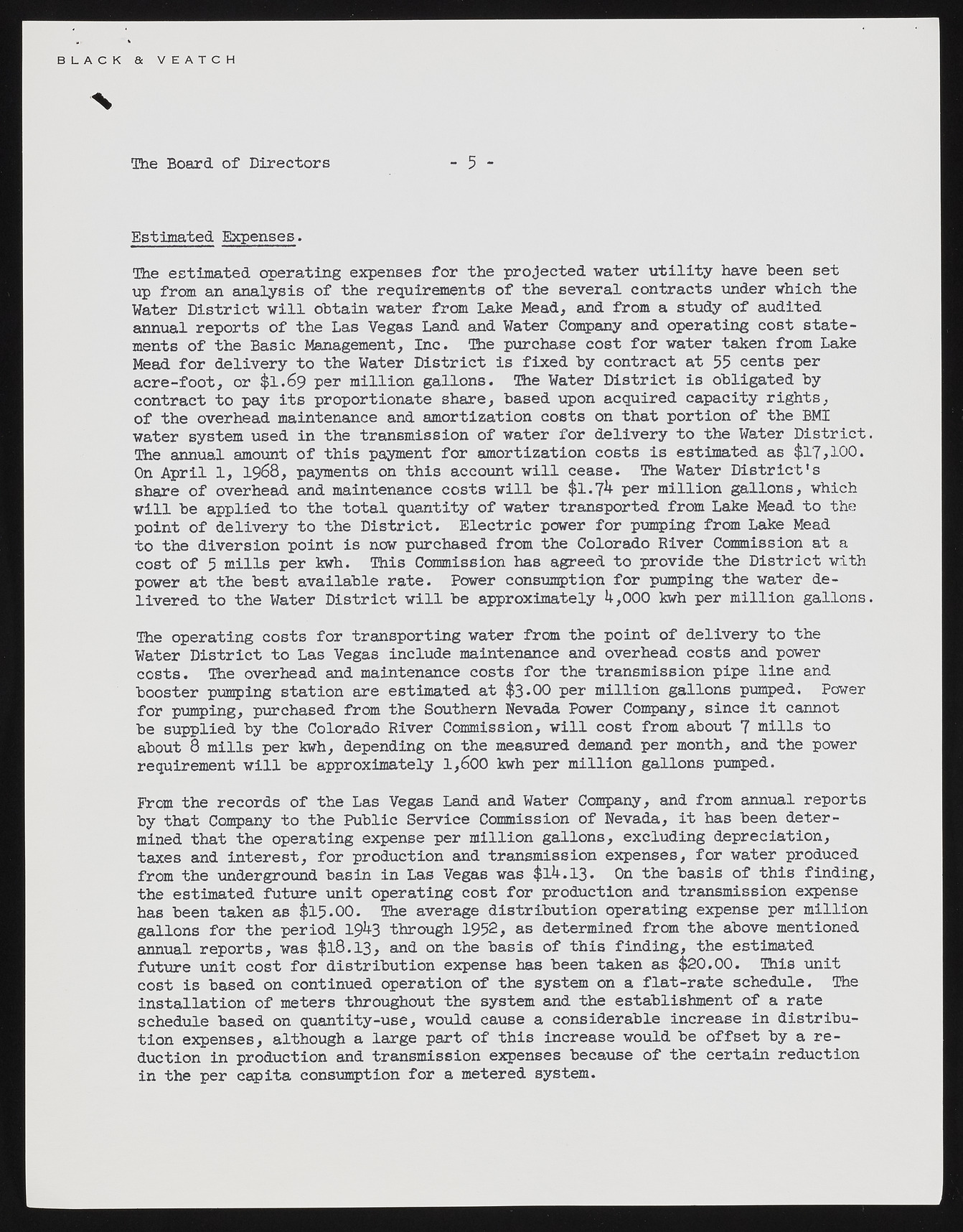Copyright & Fair-use Agreement
UNLV Special Collections provides copies of materials to facilitate private study, scholarship, or research. Material not in the public domain may be used according to fair use of copyrighted materials as defined by copyright law. Please cite us.
Please note that UNLV may not own the copyright to these materials and cannot provide permission to publish or distribute materials when UNLV is not the copyright holder. The user is solely responsible for determining the copyright status of materials and obtaining permission to use material from the copyright holder and for determining whether any permissions relating to any other rights are necessary for the intended use, and for obtaining all required permissions beyond that allowed by fair use.
Read more about our reproduction and use policy.
I agree.Information
Digital ID
Permalink
Details
More Info
Rights
Digital Provenance
Publisher
Transcription
B L A C K & V E A T C H The Board of Directors - 5 - Estimated Expenses. The estimated operating expenses for the projected water utility have been set up from an analysis of the requirements of the several contracts under which the Water District will obtain water from Lake Mead, and from a study of audited annual reports of the Las Vegas Land and Water Company and operating cost statements of the Basic Management, Inc. The purchase cost for water taken from Lake Mead for delivery to the Water District is fixed by contract at 55 cents per acre-foot, or $1 .6 9 per million gallons. Ohe Water District is obligated by contract to pay its proportionate share, based upon acquired capacity rights, of the overhead maintenance and amortization costs on that portion of the BMI water system used in the transmission of water for delivery to the Water District. The annual amount, of this payment for amortization costs is estimated as $17,100. On April 1, 19 6 8 , payments on this account will cease. The Water District's share of overhead and maintenance costs will be $1 .7k per million gallons, which will be applied to the total quantity of water transported from Lake Mead to the point of delivery to the District. Electric power for pumping from Lake Mead to the diversion point is now purchased from the Colorado River Commission at a cost of 5 mills per kwh. This Commission has agreed to provide the District with power at the best available rate. Power consumption for pumping the water delivered to the Water District will be approximately U,000 kwh per million gallons. The operating costs for transporting water from the point of delivery to the Water District to Las Vegas include maintenance and overhead costs and power costs. The overhead and maintenance costs for the transmission pipe line and booster pumping station are estimated at $3.00 per million gallons pumped. Power for pumping, purchased from the Southern Nevada Power Company, since it cannot be supplied by the Colorado River Commission, will cost from about 7 mills to about 8 mills per kwh, depending on the measured demand per month, and the power requirement will be approximately 1 ,6 0 0 kwh per million gallons pumped. From the records of the Las Vegas Land and Water Company, and from annual reports by that Company to the Public Service Commission of Nevada, it has been determined that the operating expense per million gallons, excluding depreciation, taxes and interest, for production and transmission expenses, for water produced from the underground basin in Las Vegas was $lk.l3. On the basis of this finding, the estimated future unit operating cost for production and transmission expense has been taken as $15.00. The average distribution operating expense per million gallons for the period 19 I+3 through 1952, as determined from the above mentioned annual reports, was $1 8 .1 3 , and on the basis of this finding, the estimated future unit cost for distribution expense has been taken as $20.00. This unit cost is based on continued operation of the system on a flat-rate schedule. The installation of meters throughout the system and the establishment of a rate schedule based on quantity-use, would cause a considerable increase in distribution expenses, although a large part of this increase would be offset by a reduction in production and transmission expenses because of the certain reduction in the per capita consumption for a metered system.

